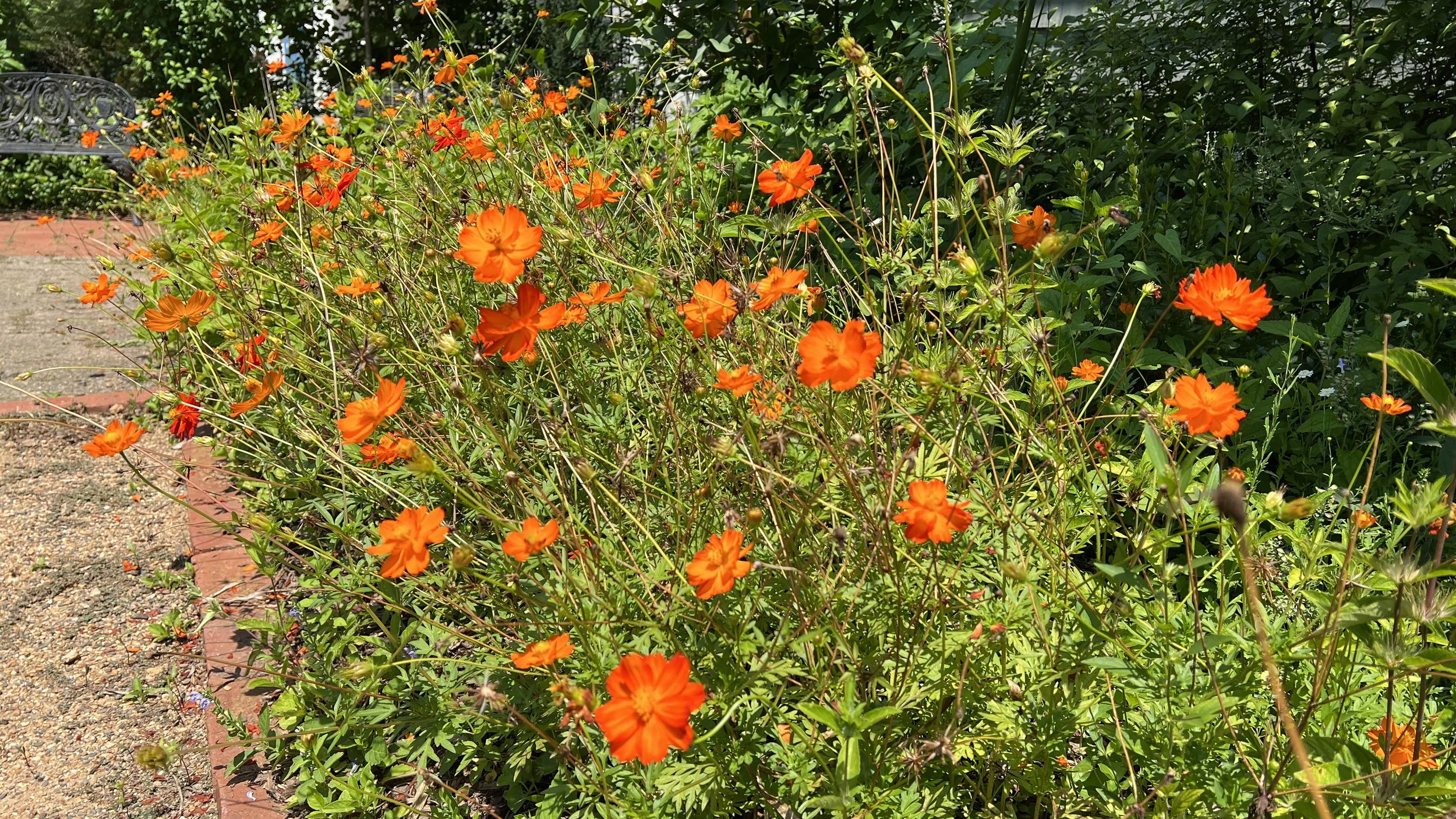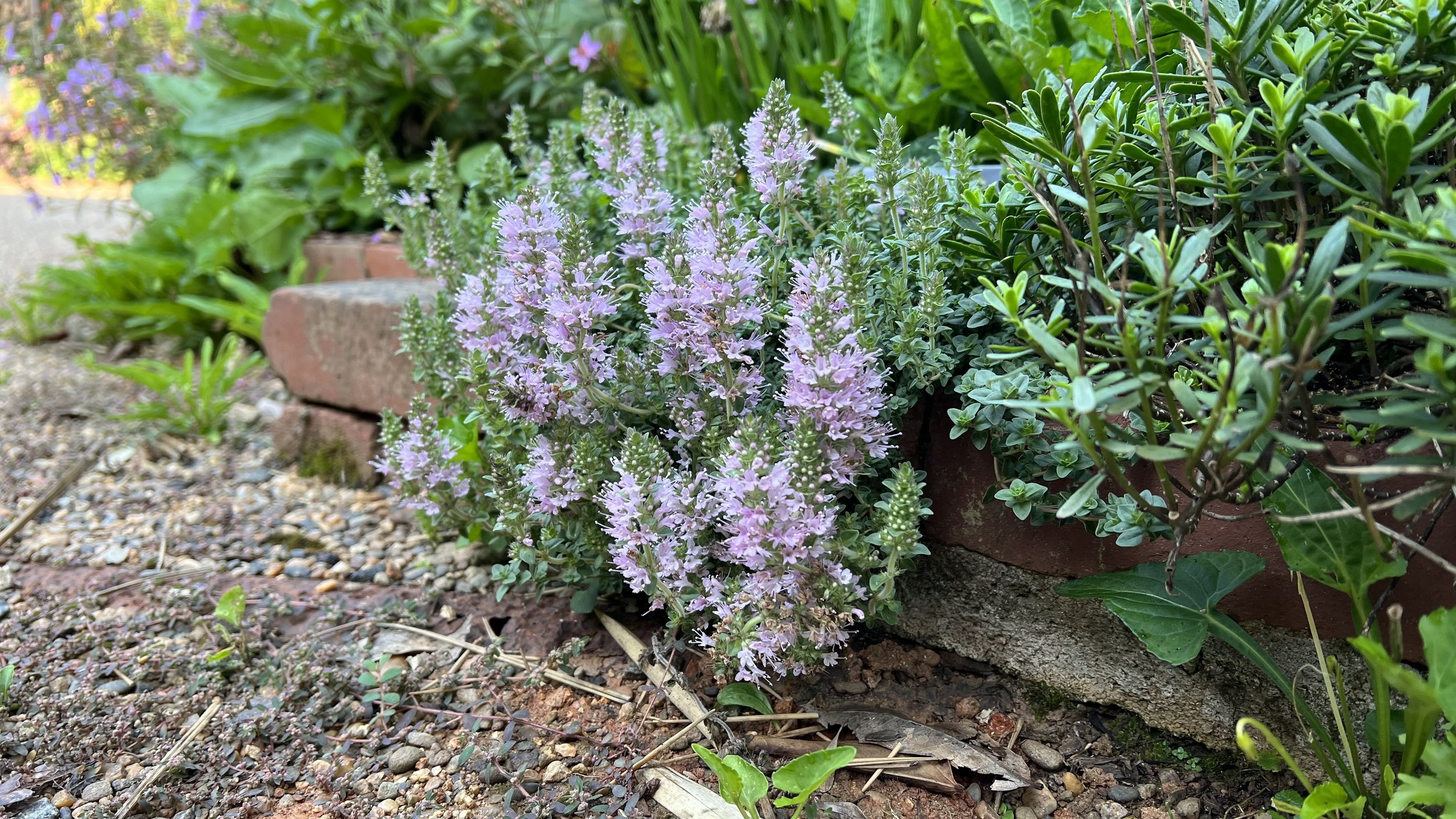One thing I can tell you with all certainty is that this gardener does not like it hot. When I stepped out into Elizabeth Lawrence’s garden this morning at 8:15, the thermometer read 79F. That alone wouldn’t be bad, but add in 85% humidity, and that’s enough to drive me back indoors. Well, not right back indoors… There are spent daylily blooms to pluck, yesterday afternoon’s pulled weeds to clean up, and the small square of centipede lawn that hasn’t seen the mower in a couple of weeks, which means it’s already going to seed.
As I go about plucking, cleaning and mowing, I am amazed by how many plants seem to be reveling in this heat. In the interest of full disclosure, we did have some rain this past weekend, so at least the ground isn’t totally powdery dry or baked to a crisp. I mention the rain because it has brought forth a boon of bloom from various rain lilies throughout the garden.
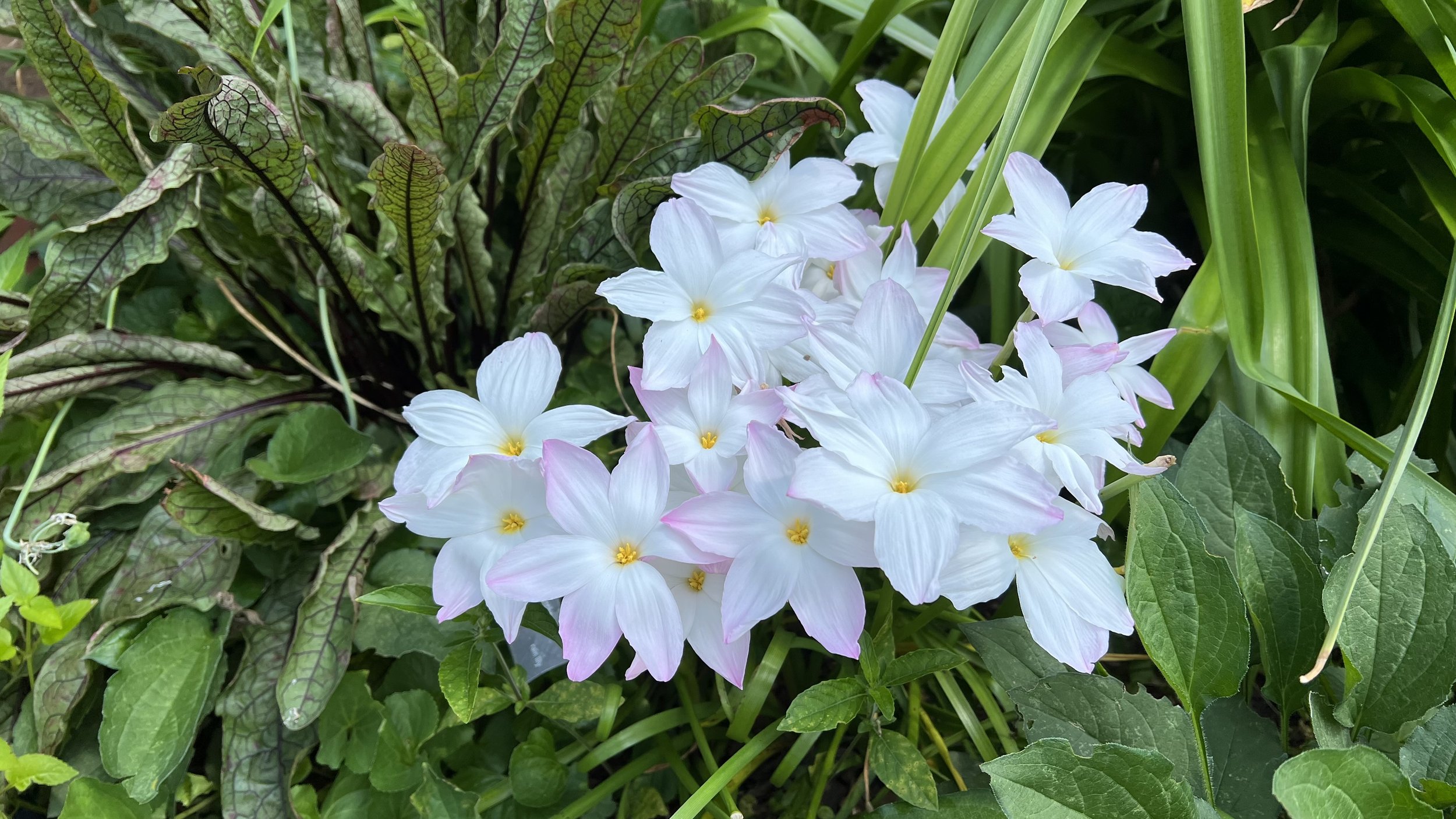
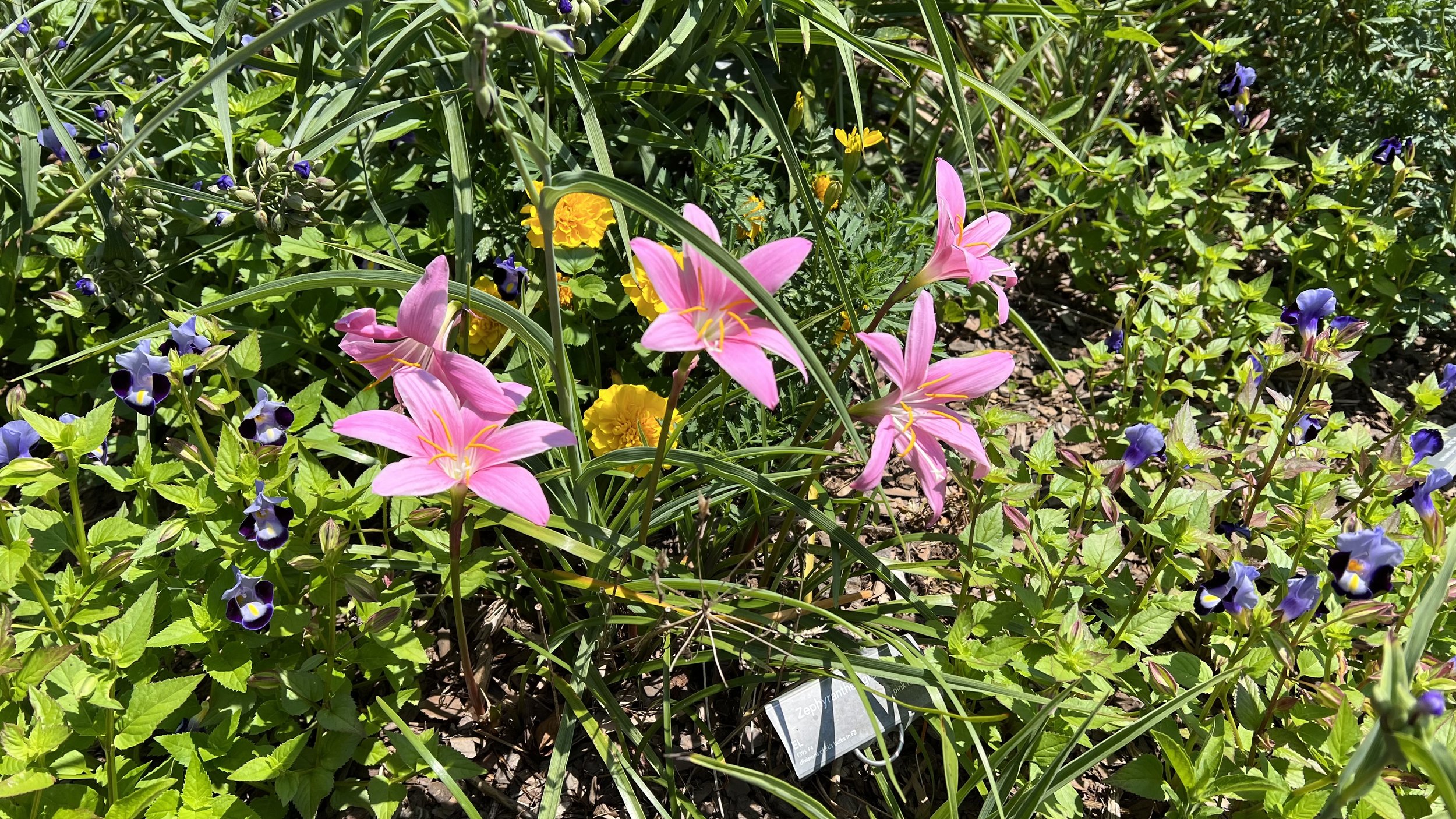
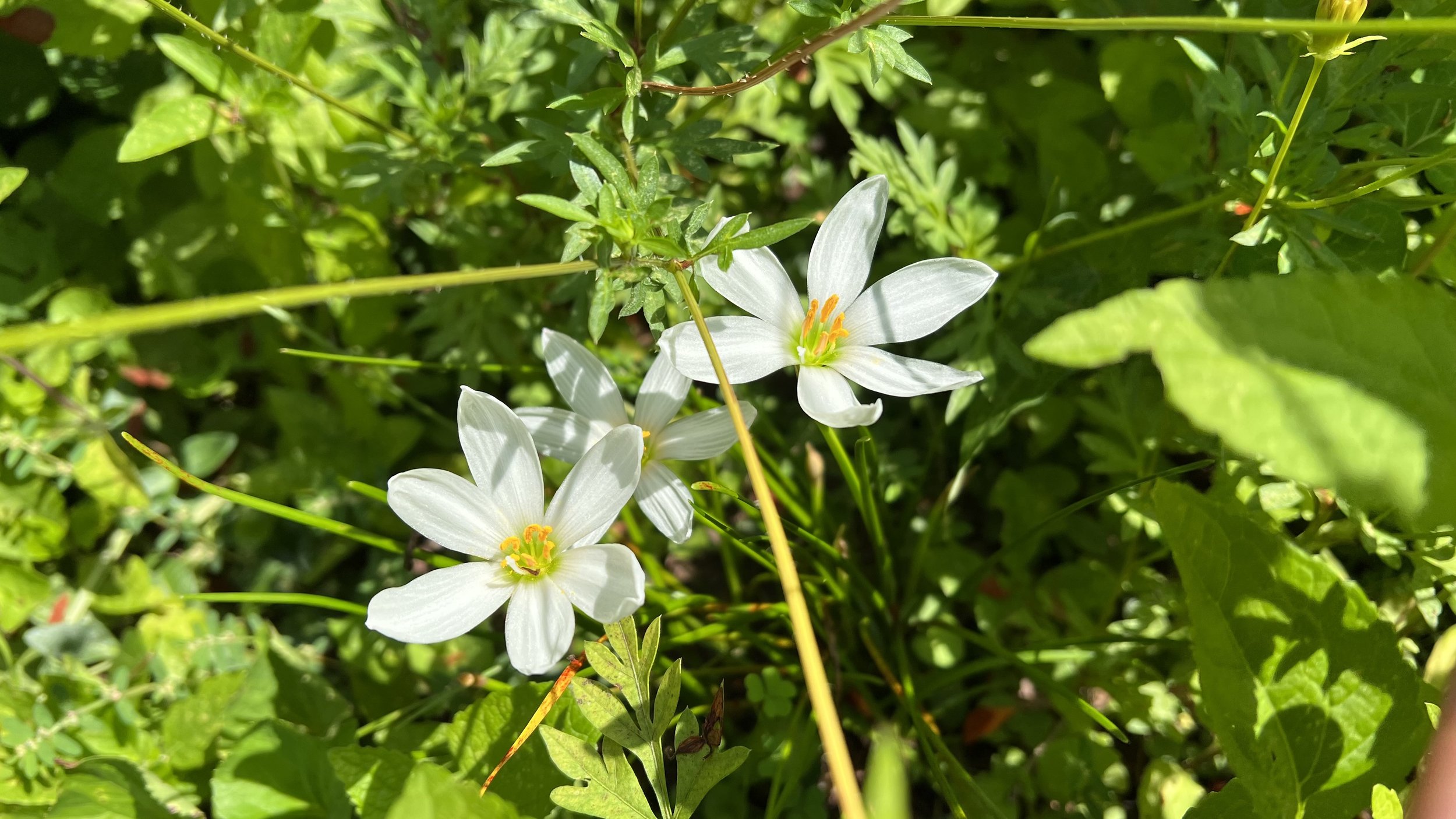

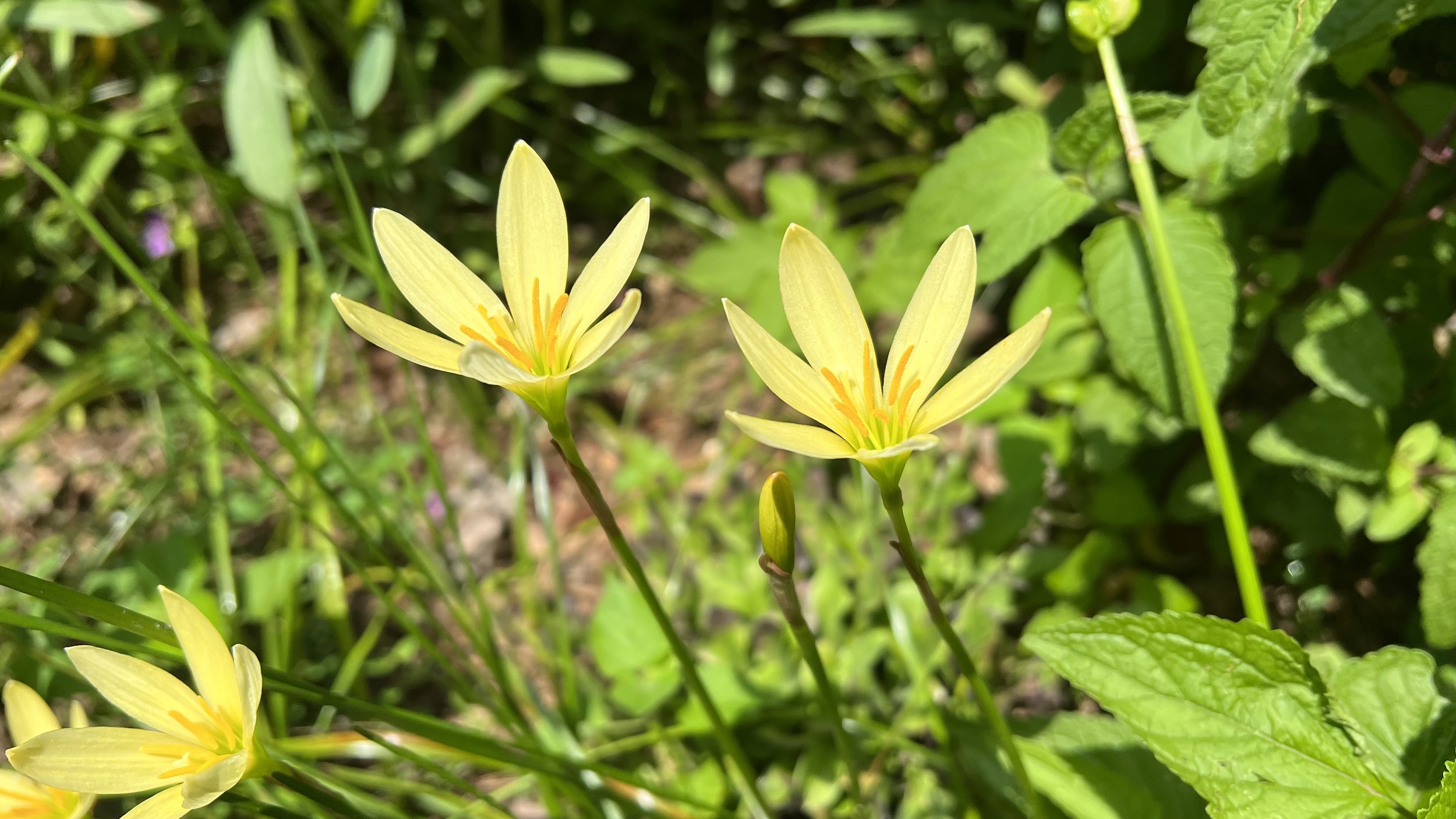
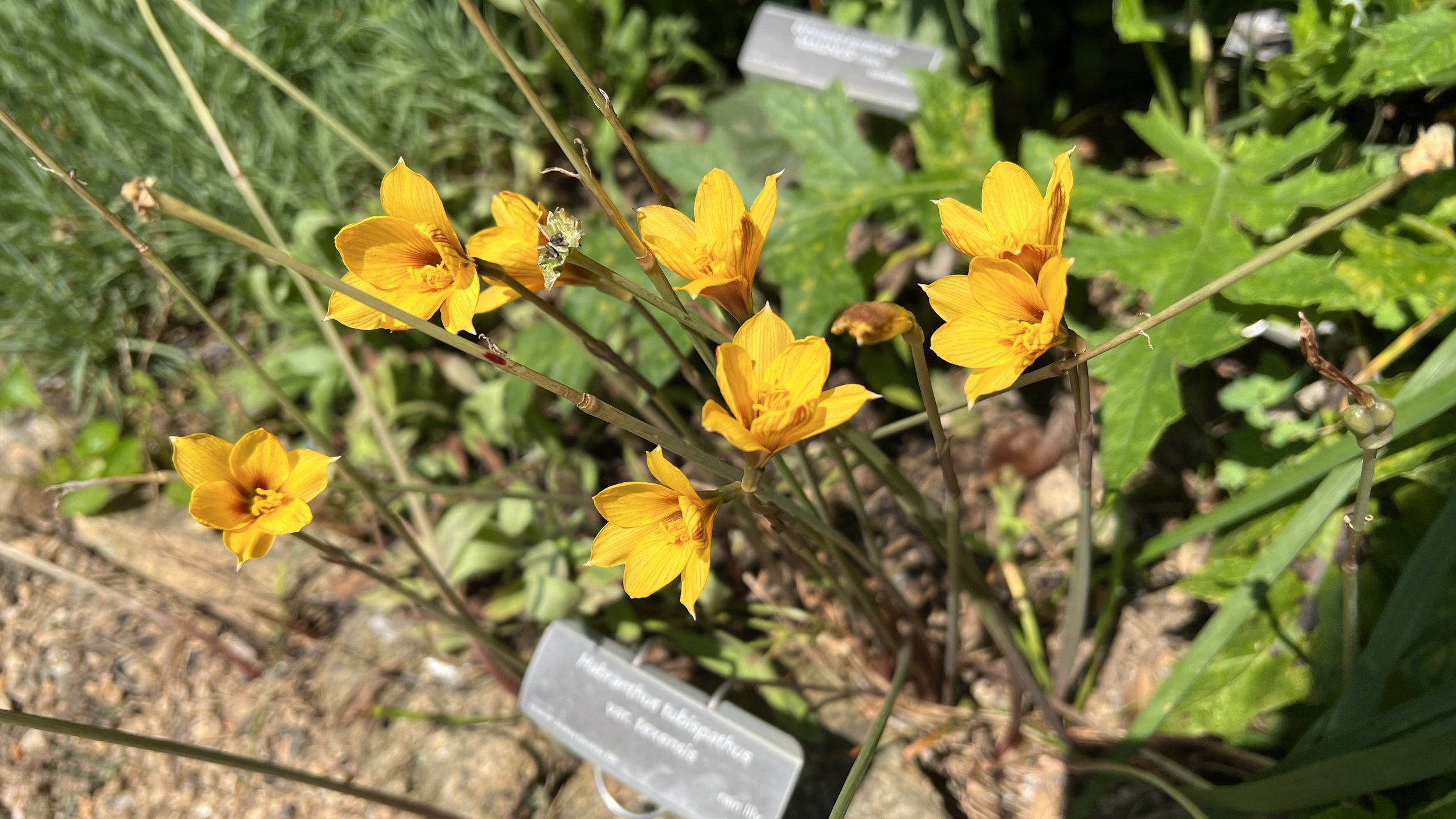
Rain lilies are a fantastic addition to a garden of any size. Most are hardy from zones 7-10, are out of the way when not in bloom (a “most desirable trait” of any plant, says Elizabeth), and vary in height from 6-12”. They are most effective when planted in clumps of at least 5-10 bulbs so you get a decent show. Plus, they surprise you by flowering—seemingly out of nowhere—almost always after summer rains.
Many other blooming beauties catch my eye. Allium ‘Milennium’ lives up to the hype—at least where it’s planted in this garden—in a fertile, well-drained, sunny spot at the edge of the lower path.
Allium ‘Milennium’ is an 8” tall by 1’ wide mass of lavender fireworks floating amid strappy, dark green foliage.
I usually have trouble growing (and keeping) many other ornamental onions, but this one… well, let’s just say if I could grow only one, this might just be it. Might. I’d have to give that some more thought. But definitely, for this moment in time, this one might just be it.
Speaking of masses, it is hard to miss the flaming orange sea of Cosmos sulphureus in front of the house. Elizabeth Lawrence grew and loved this heat-loving, reseeding annual, but it hadn’t been in her garden in at least ten years. I brought it back years ago, but didn’t have much luck with it keeping itself going. The keyword in that sentence is “itself”. It needed a bit of a helping hand to really get going.
Sizzle, sizzle! Spread a handful of seeds and wait a couple years, and you, too, can have a hotbed (ha!) of Cosmos sulphureus. If you’re interested in recreating the look, I’ll have plenty of this seed available at our Fall Plant Sale in October.
And now it’s… well, off to the races! I actually did thin it out twice already this year, and I’m madly saving seed to package up to offer this fall at our Plant Sale.
Switching gears to something new, at least to me and this garden, is one of the prettiest, tiniest ground covers I have ever grown, Thymus comosus.
Are you KIDDING me?? I cannot get over how flowery this diminutive Carpathian thyme is! And that pink is such a delicate color, so welcome and cooling when it’s 95F out. In this heat, I’ll take ALL the cooling I can get!
I mail-ordered this as a trial from Arrowhead Alpines last spring. Elizabeth grew many types of thyme in her garden, so I have been working to bring some back and add some new ones to the living collections. When I unpacked the 2 1/2” pot of this thyme from the box of botanical treasures, I must admit I didn’t hold out a ton of hope for its survival. I planted it at the edge of a space that originally (albeit somewhat loosely) served as Elizabeth’s herb garden—the bed at the front corner of the house, near the kitchen door. I’ve had good luck here with another thyme, Thymus praecox var. albiflorus, so I hoped this new addition would do okay. Sometimes things work out, and I could not be happier that this little slow-growing thyme is not only growing, it’s thriving. And in this brutal heat. You GO, little fella!
It’s time for me to get back out and do some weeding, so I leave you with a few other snapshots of plants that are loving this heat.
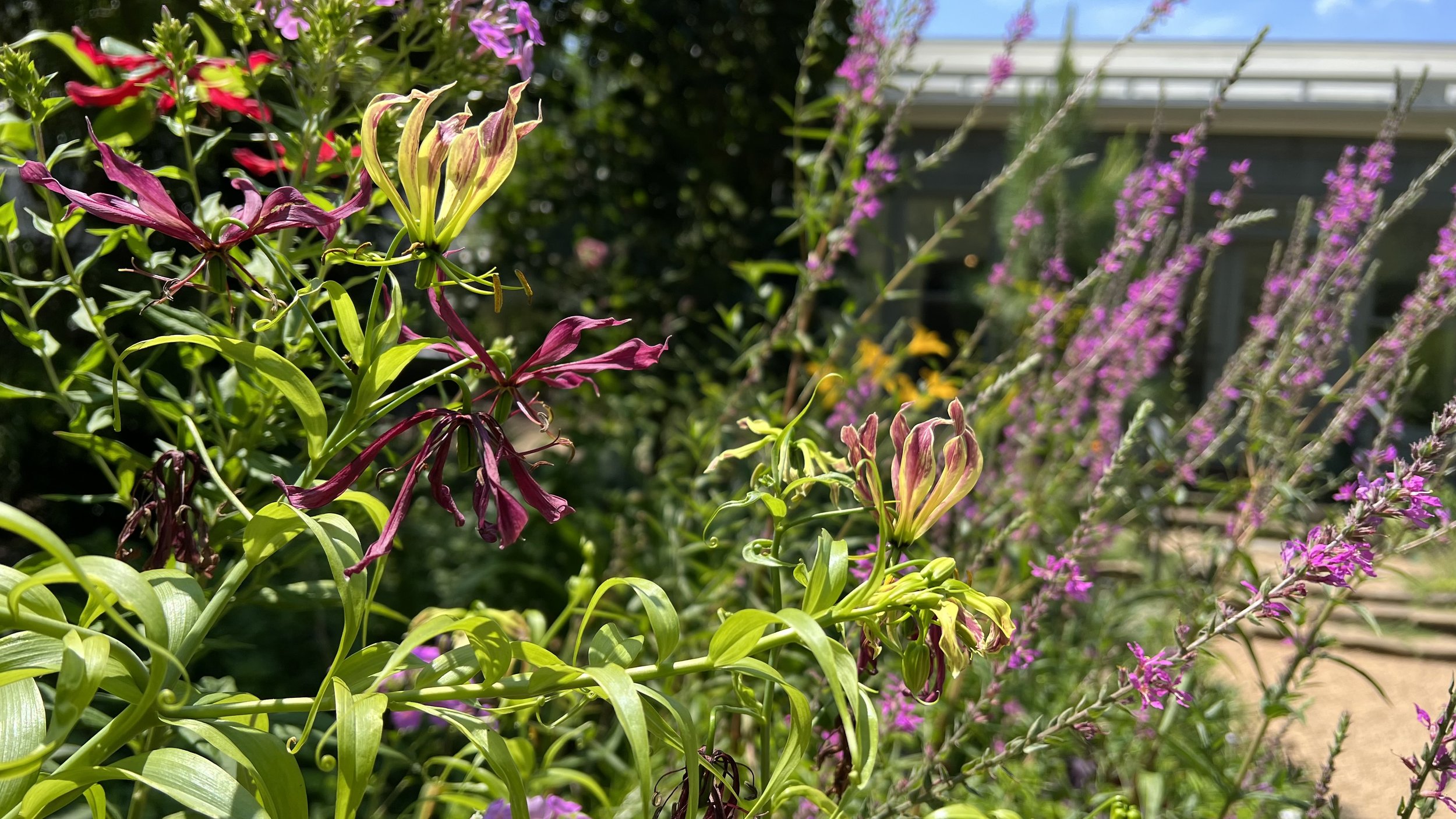

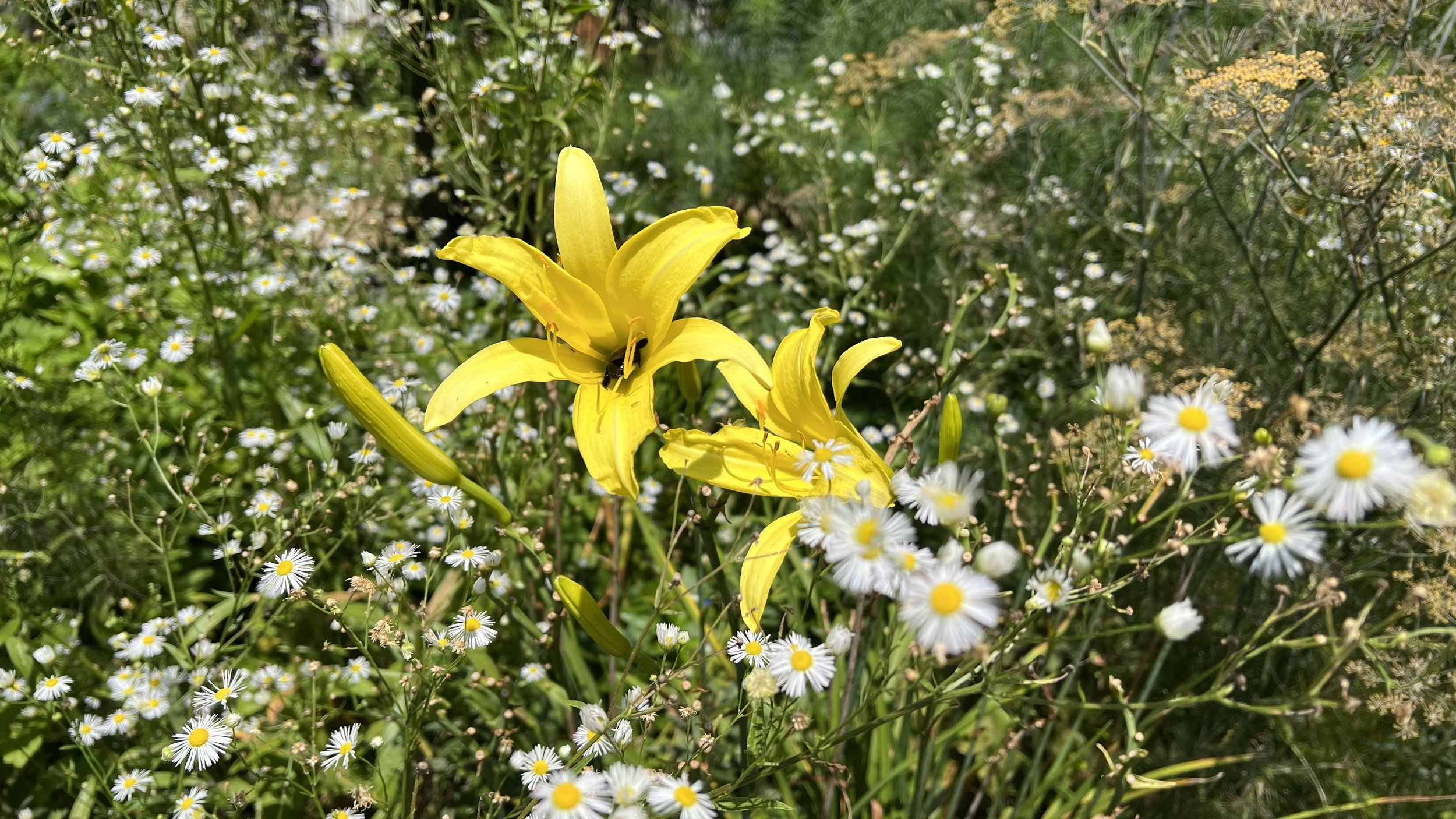
Come see for yourself; there are so many more beautiful flowers to see in Elizabeth Lawrence’s garden!
Yours in dirt (preferably in the shade),
Andrea Sprott


